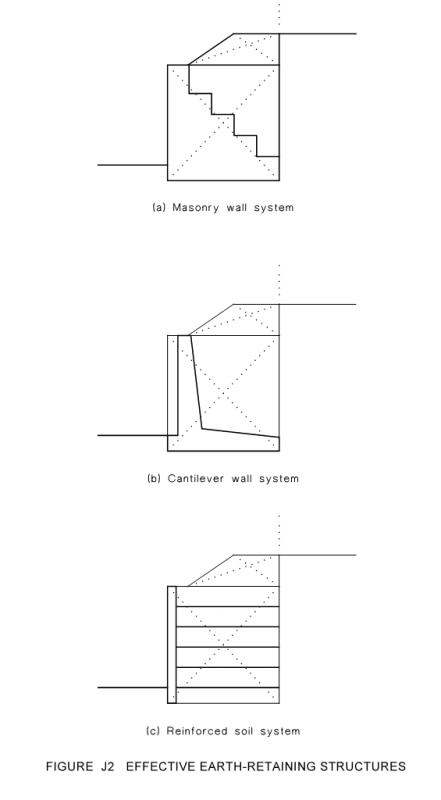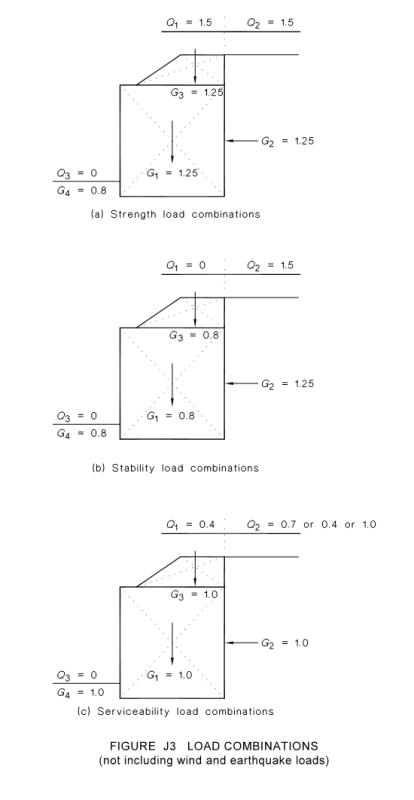Not sure if you are in NZ or Australia, but the general approach that seems to be considered/taught at University (at least at Auckland University) in NZ is to simply factor up the lateral earth pressure by 1.5, and take a factor of 1.0 on everything else acting vertically.
In NZ we don't have any retaining code, so within reason you can take any approach you like provided it satisfies first principles.
EDIT : -This actually reminds me that the NZBC (NZ Building Code) has some examples of wall design, have a look
here.
Unfortunately MBIE have produced some guidance that seems to be a mix of ultimate limit states design and working stress (which I don't fully agree with), so its pretty confusing out there. Their design examples go completely in the face of those in the NZBC. The MBIE guidance suggests your surcharge is some weird loadcase, which in no way produces the maximum overturning. I have queried their advice previously and the answer I got was 'it was looked at by others & peer reviewed', there wasn't any attempt to answer the specific queries questioning what they came up with at all and that it doesn't make sense based on what people have been taught for the last 20 years at Univ of Auckland by the likes of Mick Pender, etc.
Basically I don't think anyone is going to question what you do if you follow what was taught to you at university I guess. I've been doing that for near on 20 years and I rarely use 0.9G anymore, if anything footings are always deeper/heavier than detailed/designed. I vaguely recall something about going to 0.9G actually can for a heavier wall result in lower bearing soil stresses, dending on the magnitude of axial vs lateral loads. I guess look at the sensitivity of these types of things and make an informed decision around which way to go. All load cases have an '&' for a reason as opposed to a 'plus', if it doesn't produce a worse load effect then don't use it as part of the combination.


